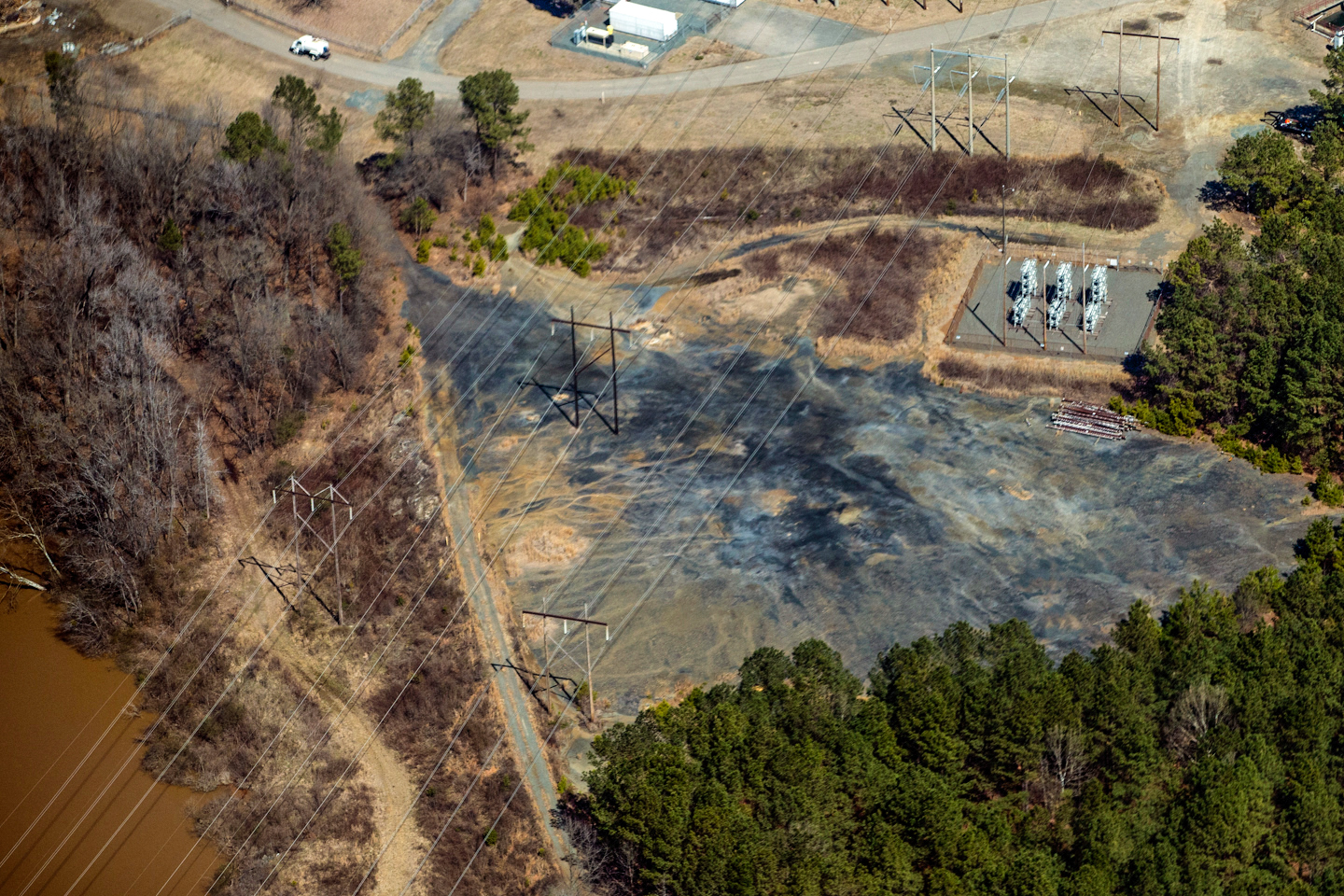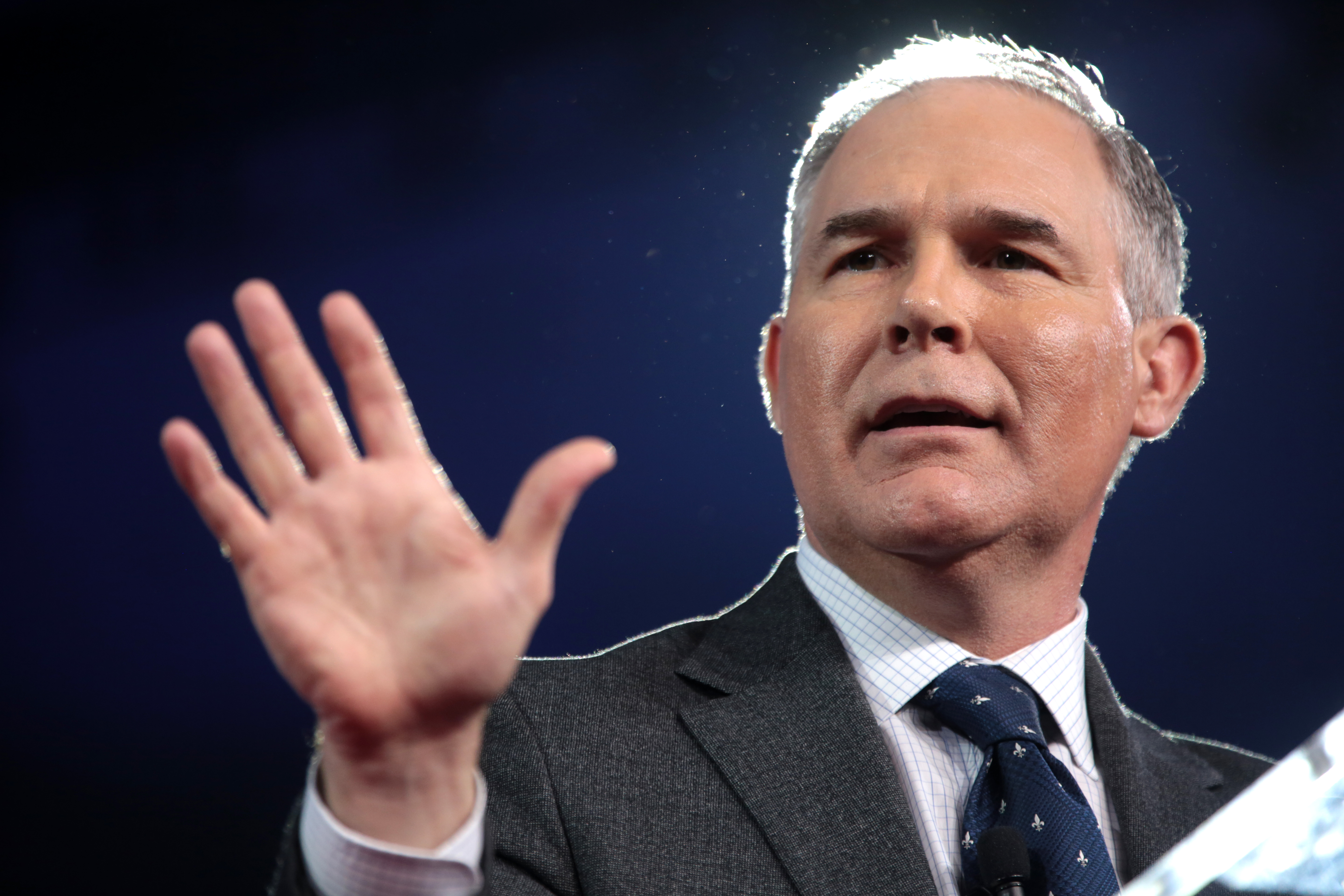Coal ash contains lead, arsenic, and mercury – and it's mostly unregulated
Can science find solutions where policy lags before the damage deepens?
In 1989, the Exxon Valdez oil spill made headlines when the tanker ran aground off the coast of Alaska, spilling 10.8 million gallons of crude oil over several days. It’s since been eclipsed by the Deepwater Horizon oil spill into the Gulf of Mexico. But even that pales in comparison to the Kingston Fossil Plant coal fly ash slurry spill in 2008.
Around 1 am on December 22, 2008, a containment wall broke at a coal-fired power plant outside Kingston, TN, and 1.1 billion gallons of coal ash spilled over into an adjacent river and the surrounding land. That's the equivalent of 1,660 Olympic-sized swimming pools of toxic waste. The ash slurry was over six feet deep, covering around 300 acres. Though you might not have heard of it, it was 100 times the size of the Exxon Valdez spill.
Coal itself isn’t a particularly toxic material. But after it's burned, what remains in the ash includes lead, mercury, cadmium, chromium, arsenic, and selenium, all in levels that may threaten human health. It's not a problem that's limited to Tennessee: coal combustion has been a significant source of power in the US since the early 1900s, so over a century of coal ash has built up. The most recent data on ash stockpiles come from 2014; in that year alone, the US produced 130 million tons of coal ash. To put that in perspective, that's about a little under half the weight of the entire human population on Earth.
Some of this can be beneficially reused – instead of putting it in a landfill or just storing it near power plants, we can use it in concrete or as filler in things like roads and embankments. Using ash in concrete, for example, locks in the heavy metals and makes the concrete stronger. The fact that it can be used productively, though, is what has held the Environmental Protection Agency (EPA) back from labeling it as a hazardous waste.
.jpg)
A hazardous waste label puts the federal government in charge of how a material is handled. Industry members argue that a hazardous waste label would make coal ash more difficult to recycle, ensuring that it remains stored in landfills. But right now, and for the foreseeable future, states are allowed to dispose of coal ash as they see fit, which has led to spills and seepage into groundwater.
There are over 1,000 active coal ash storage sites across the United States, and to date, there are no legal requirements for container liners or leak detection systems. Often, catastrophic containment failures – like the Kingston spill and the Dan River spill in Eden, NC, just a few years later – happen after a holding pond wall cracks or a major pipe breaks. But there's also danger from from unlined basins or otherwise improperly managed landfills, which can cause slow seeps of contamination, and are also sources of long-term illness and environmental damage.
In the early 2000s, according to a 2007 EPA report, coal ash leaks contaminated groundwater with heavy metals in 67 towns across 26 states. But that number is likely under-reported: Often, utilities that own the coal ash storage sites aren’t required to monitor their groundwater. Because monitoring isn't required, it's hard to know how big this problem really is.
Coal ash in the water
Overall, this seems like a situation that calls for a clear solution: regulation. The EPA came close to regulating coal fly ash for decades, but always pulled back due to industry pressure. But in December 2014, the EPA finally addressed coal ash's hazards of in a landmark piece of legislation called the Coal Combustion Residuals (CCR) Rule.
The rule established location and design requirements for storage facilities. Coal ash ponds, for example, were forbidden above uppermost aquifer layers, or near wetlands, or seismic zones. Under the rule, existing ponds needed to have composite liners and monitor groundwater conditions, and new ponds needed to have water collection and removal systems. There were a host of other structural and safety assessments with annual or weekly requirements introduced, too.
These regulations were expensive but straightforward, and designed to protect the public by protecting groundwater from contamination. Most environmental advocacy groups said the rule didn't go far enough; as a National Science Foundation Fellow in Environmental Engineering at Georgia Tech, I was interested to see what the industry members themselves would think.

USFWS responders
I soon got my chance: in the summer of 2016, I attended a meeting of utility executives. The mood around the regulation was begrudgingly accepting – “All right, here we are, let’s make the best of it.” In fact, most of the utility folks I spoke with seemed grateful to have the regulation.
"The regulatory uncertainty that has impeded the beneficial use of coal ash for half a decade has finally come to an end," said Thomas H. Adams, the executive director of the American Coal Ash Association, in a 2014 statement made shortly after the EPA published the standards.
As an environmentalist, reuse and recycling are generally music to my ears. (And coal fly ash reuse is no joke – for every ton of ash used instead of traditional cement, we prevent a ton of carbon dioxide from entering the atmosphere). But of course, reusing coal ash is not always possible – or even beneficial. After a golf course in Chesapeake, VA, used 1.5 million tons of coal fly ash as filler, it was found responsible for high levels of lead and arsenic in the groundwater below just two years later. Similarly, when a playground in Pines, IN, used coal fly ash as filler, the extent of the groundwater contamination was so severe the EPA designated it a Superfund site in 2012. So there's an ongoing question: How can we make this kind of recycling actually safe?

Seepage in 1963 from a coal ash pond on Cape Fear
Waterkeeper Alliance Inc. / Flickr
At the time, it seemed like this regulation would be a step toward answering that question. As a scientist, it appeared to be a win-win: It would help companies feel secure investing in research on reusing coal ash. And it would help researchers keep learning safe ways to reuse the ash, while protecting communities where it was stored in the meantime. But all of that was before Trump was elected.
Under Trump's EPA Administrator, Scott Pruitt, there's been a massive redirection of the agency's policy, from its approach on climate change to more common-sense regulations on pollution. Pruitt has rolled back regulations on the Clean Water Rule, the Clean Power Plan, car emissions standards – and, unfortunately, on coal ash.
In March 2018, the EPA proposed more than a dozen changes weakening the Coal Combustion Residuals rule. States may decide to use "alternative standards" for contaminants, as well as decide when and whether groundwater monitoring would be required, as well as what remediation actions, if any, should be taken.
“Today’s coal ash proposal embodies EPA’s commitment to our state partners," Pruitt said in an official EPA press release, "by providing them with the ability to incorporate flexibilities … based on the needs of their states.” The potential health consequences of the rollback were not discussed, but the EPA did note this amendment will save the utility sector between $32 million and $100 million in annual compliance costs.

Scott Pruitt
Gage Skidmore / Flickr
The key to making coal fly ash safe to recycle is finding a way to lock in its toxic elements. Products that transform the coal fly ash, like concrete, do this really well; the heavy metals get "encapsulated" into the concrete matrix. Even if you pulverized the concrete, the heavy metals wouldn't be accessible. Without encapsulation, like when coal fly ash is used as filler, these toxins stay loose and can leach into water.
Concrete made of coal fly ash is stronger, less permeable, and requires less water. But it's hard to work with because the composition of the ash is highly variable – imagine trying to make a cookie recipe, but when you go to buy flour, it's different every time! My lab at Georgia Tech is studying this dilemma now, experimenting with new ways to lock in the toxins.
But while we pursue scientific answers, coal ash is facing a fundamental political challenge, too. The roll-backs on the CCR role have once again placed the waste into the realm of regulatory uncertainty. What is clear, though, is that the health of communities and the environment depend on us figuring it out.
Peer Commentary
Feedback and follow-up from other members of our community
Brianna Bibel
Biochemistry
Cold Spring Harbor Laboratory
Reading this piece, I couldn’t help but wonder about its environmental justice implications. Low-income communities often suffer the most from environmental contamination, and I’m wondering if this is also the case with coal ash? On the one hand, I can see wealthier communities pushing back against the use of coal-ash-based products because of potential adverse health affects. But on the other hand, they might advocate for such recycling, as long as it’s not in their community. This NIMBY effect could lead to these products mainly being used in low-income communities with less political and monetary influence - unless they’re more expensive. How does the cost of coal-ash-based products compare to alternatives?
You’re right - environmental justice does come into play here. It’s not an issue so much with products where the ash is encapsulated, like concrete; those are considered safe, because the toxins are largely locked into the new chemical structure of the material. Concrete containing ash is also cheaper and stronger – really, the dream when it comes to reusing a waste.
The problem comes into play when you have ash being used untreated, as filler material, or just stored in a landfill, and this is especially the case with the NIMBY effect. According to the new EPA rules (that Scott Pruitt hit pause on), coal ash storage ponds that aren’t up to code need to be closed. “Up to code” is now more or less determined by individual states, and as such utility operators are now moving the coal ash to states with less regulations.
There’s a landfill in Alabama that now accepts waste from 33 states, including 4 million tons of coal ash waste, from none other than the Kingston, TN coal ash catastrophe in 2008. The landfill sits right next to the city of Uniontown, a city that is 90 percent black and where half the population lives below the poverty line.
The community filed a civil rights complaint with the EPA trying to fight the landfill back in 2013; it was just rejected by the EPA last month. (Check out this article in the Guardian about it.)
From the Guardian article:
One of the things my lab works on is affordable pre-landfilling treatments for the ash: maybe the ash can’t actually be used in concrete, but we can still treat it before we landfill it to avoid these awful health impacts. To me, this seems like the ultimate answer for managing coal power wastes, but it certainly makes solar power seem more attractive.